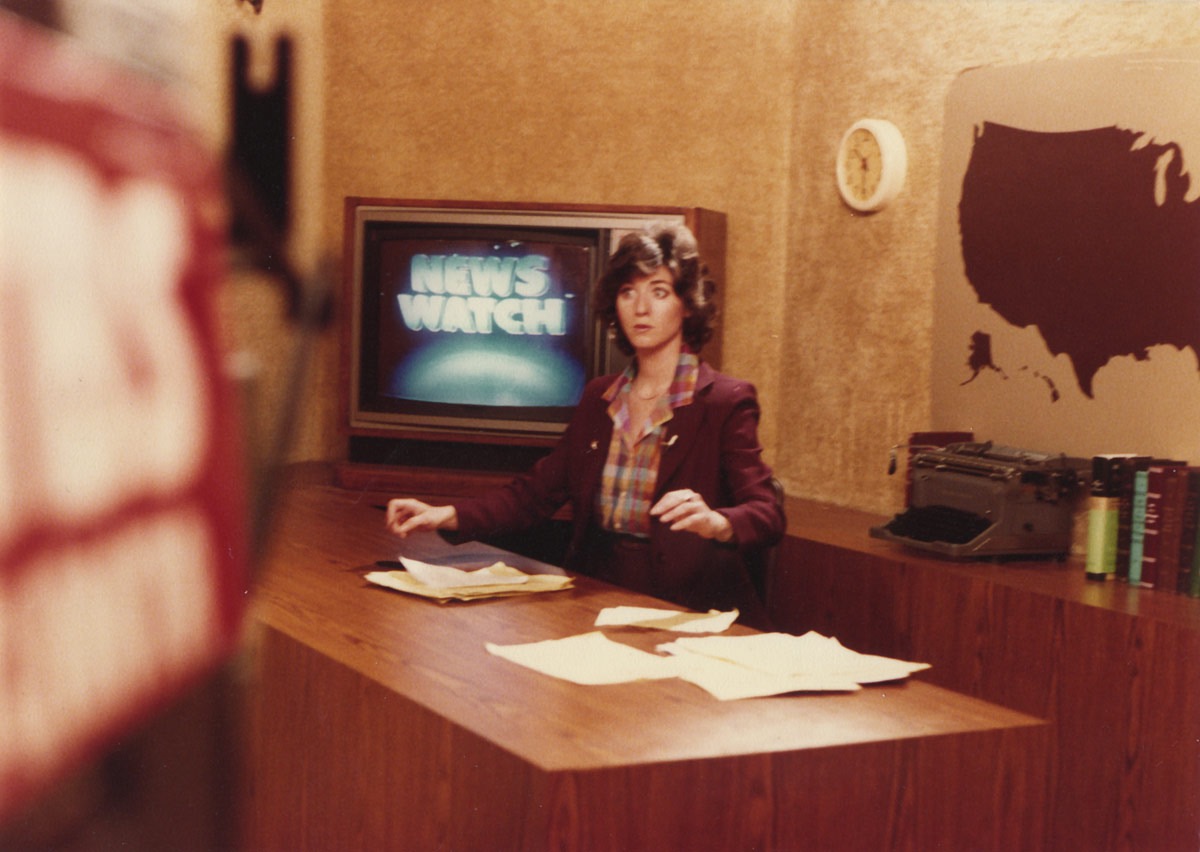Closet update.
Thursday, May 7th, 2020
One of the things that has changed of late in television news or whatever it is exactly that cable news networks offer in the name of television news is that the idea of having lots of people at a very big desk thrashing over the ideas of the day is just too scary, too dangerous, just plain unsafe.
So now they are lots of heads in boxes in very different places. And in some cases, those places historically extend from a very small, very carpeted room in Midtown Atlanta.
When Ted Turner’s independent WTCG/WTBS was first getting ‘SuperStation’-y, cast into millions of cable-tv connected homes via satellite, part of the regular schedule were short news updates, largely rip-and-read wire copy affairs, broadcast in the SuperStation’s one and only tiny-ish studio on West Peachtree street. They tried taping a bunch of these in advance, because it was inconvenient to shut down production just to do a minute-long newscast and then yank equipment back to wrestling or car commercials or whatever else you might be doing. But news being news, y’know, tended to become superseded or obsolete when you’ve recorded a whole day’s worth first thing in the morning. You want fresh news, right?
So the idea came together to do the inserts in a very very small room walled off from the rest of the studio in such a way that they could happen simultaneously with other (more important? profitable?) stuff.
Anchor Tina Seldin, startled perhaps, but on the job reporting from the SuperStation WTBS News Closet™.
This room, which I am both proud and very embarrassed to say I had a big part in designing, came to be known as the News Closet, because really, it wasn’t very big. But I am kinda satisfied that an idea scribbled on graph paper became a functional solution. It was a big deal to get that RCA XL-100 color console TV there up on the desk—it was quite heavy (and deep, with a large picture tube), and back then shooting a TV screen with a huge studio camera was no trivial affair. The colors, the frame rate, ah, don’t get me started. And we worked out the odd angles of the desk so it would look larger than it really was on camera. And behold the fully carpeted walls! (The cleaning crew would vacuum them nightly.) The acoustics in that room were terrific, and you could barely hear wrestlers bellowing outside the door. And there was a totally useless outline of the United States! And a typewriter!
It did get a little warm, however.
Nowadays networks have these small studios, they tend to call them more professional things like “flash cam studios” but they have the same basic idea—a camera more or less in fixed position, a backdrop, and a place for an anchor to originate from. And now that it’s easy to put a big ol’ bright LCD screen right behind your head, the set background just has to come out of someone’s laptop. Same idea as the virtual sets for The Mandalorian, except not really and not nearly.
So in this age of social isolation, the vast majority of news faces you see, when not originating from their basements or their living rooms, are in what I would call a news closet.
And why not?


